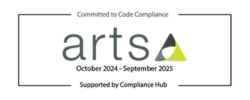Managing diabetes during Ramadan – not even water
With Ramadan approaching later this month, we’re taking a look back at a session delivered by Nadia Malik at Diabetes Professional Care 2023 about managing diabetes when fasting during Ramadan.
Nadia is a PCN Pharmacist at North Stockton Primary Care Network. Having previously worked in community pharmacy for 15 years, Nadia has a special interest in type 2 diabetes and has helped set up a Diabetes Interest Group which facilitates upskilling and education for local healthcare professionals. Her presentation at DPC 2023 provided practical advice for healthcare professionals to support diabetic patients choosing to fast during the month of Ramadan.
Nadia starts by addressing the elephant in the room. “Yes, it’s not even water. Everyone always asks that so I thought it would be appropriate as the title of my talk just to get that out of the way.”
Giving some background on Ramadan, Nadia notes that, “Ramadan is the holiest month in the Islamic calendar. During Ramadan, Muslims abstain from food and drink. So yes, not even water. Islam follows a lunar calendar which means that the dates of Ramadan go back by approximately ten days every year.”
During Ramadan, fasting is observed from sunrise until sunset. There are no restrictions on food or drink intake between sunset and dawn. Therefore, fasts will be longer during the summer months when the days are longer, and shorter when Ramadan takes place during the winter months.
Nadia explains that, “during Ramadan, you wake up at Suhoor, which is before sunrise, and have a morning meal. Waking up before sunrise and then going back to bed for a couple of hours before you’ve got to get up for work is a disruption to your sleep pattern, and that makes it a bit harder than it would be if you were just getting up and fasting for 12 hours like intermittent fasting. Following sunrise, you carry on with your normal day. At sunset, you open your fast and then you offer one of the prayers, Maghrib, after which you have your normal evening meal, Iftar. There’s also a prayer towards the end of the night, Isha, in which an extra prayer Tarawih is incorporated, and this is longer than normal Isha prayer.”
Addressing who fasts during Ramadan, Nadia states that, “generally, all healthy adults will fast, however there are exemptions. For example, pregnant ladies, the elderly, the frail, those travelling or where there is a condition that would mean that fasting would be detrimental to health and wellbeing. For those that are unable to fast during Ramadan, they are able to offer charity instead.”
However, Nadia notes that many people with diabetes, who may be exempt, will still choose to fast during Ramadan. It is therefore imperative that healthcare professionals have the tools to be able to support their patients during this time to help mitigate any risks.
While there has been some research to show that there is benefit to fasting, even for patients with diabetes because it can help manage their blood glucose level, fasting over such a long period of time may also carry some risks. “The biggest risk to patients with type 2 diabetes who choose to fast is hypoglycaemia. Patient education is the best support for our patients with diabetes to fast safely,” says Nadia.
As not even water is permitted, dehydration is another risk. Nadia notes that, “patients should be advised to start drinking water as soon as they open their fast. If they are attending prayers at the Mosque, they can take a bottle of water with them to sip during prayers. There has been research that indicates that dehydration can increase the risk of thrombosis, so it is imperative that patients are counselled on the importance of keeping hydrated.”
Another risk for patients with diabetes fasting during Ramadan is hyperglycaemia. “This might seem a little bit strange considering people are going long periods of time without food and drink, but there is a risk of overeating after opening your fast – and I say that from experience! Upon opening the fast, patients may experience a big spike in their blood glucose, and it is these fluctuations in blood glucose that can increase the risk of complications associated with diabetes.”
So what advice can healthcare professionals give to patients during the month of Ramadan? Each situation will be different and requires an individualised approach, especially when complex medication regimens are involved. A change in eating habits may subsequently require a change in medication regimen.
Dietary advice for patients during Ramadan can also be very useful. “The food during Ramadan is amazing. Everybody goes all out. It’s really difficult to tell patients not to have certain foods during Ramadan, so the main thing is to encourage everything in moderation. At Suhoor time (before sunrise), I would advise protein and long-acting carbs like brown bread and rice, and try to avoid sugary foods. Traditionally you will open your fast with water and dates. It can feel very difficult to be restrictive when you haven’t eaten all day, but it is important to highlight moderation here, so more water and only one or two dates. You can open your fast with anything sweet, so fruit is also acceptable. In South Asian culture, the evening meal tends to contain a lot of fried foods and a lot of sweet things, so again, moderation is key.”
If a high-risk patient is choosing to fast, then it’s important that they can recognise the signs of hyperglycaemia and hypoglycaemia and are counselled on when to break the fast if it is posing a risk to their health. Nadia explains that, “when delivering education, it is imperative that patients are aware of when they need to break their fast. Patients will be reluctant to break their fast but they need to be aware of when to break it, and it’s important that patients are educated on what to look out for and the risks associated. Patients should break their fast if they have any signs of hyperglycaemia or hypoglycaemia, such as confusion, nausea or vomiting, abdominal pains, trembling, sweating or chills, or palpitations. They should also break the fast if their blood glucose level drops below 3.9mmol/L or rises above 16.6 mmol/L, but the only way they are going to know that is if they are doing a finger prick or CGM, so patients should be encouraged to test their blood glucose levels more often during that month.”
Ultimately, although there are risks associated with patients with diabetes fasting for such a prolonged period of time during Ramadan, it is a personal choice, and by educating patients on the risks and giving them strategies to minimise risks where possible, healthcare professionals have an important role to play in ensuring that patients with diabetes who chose to fast during Ramadan can do so safely.
To register your interest in attending Diabetes Professional Care 2024 on 15-16 October at Olympia, please register here.



)
)
)
)

)
)
.jpg/fit-in/1280x9999/filters:no_upscale())
.png/fit-in/1280x9999/filters:no_upscale())
)
)
)
